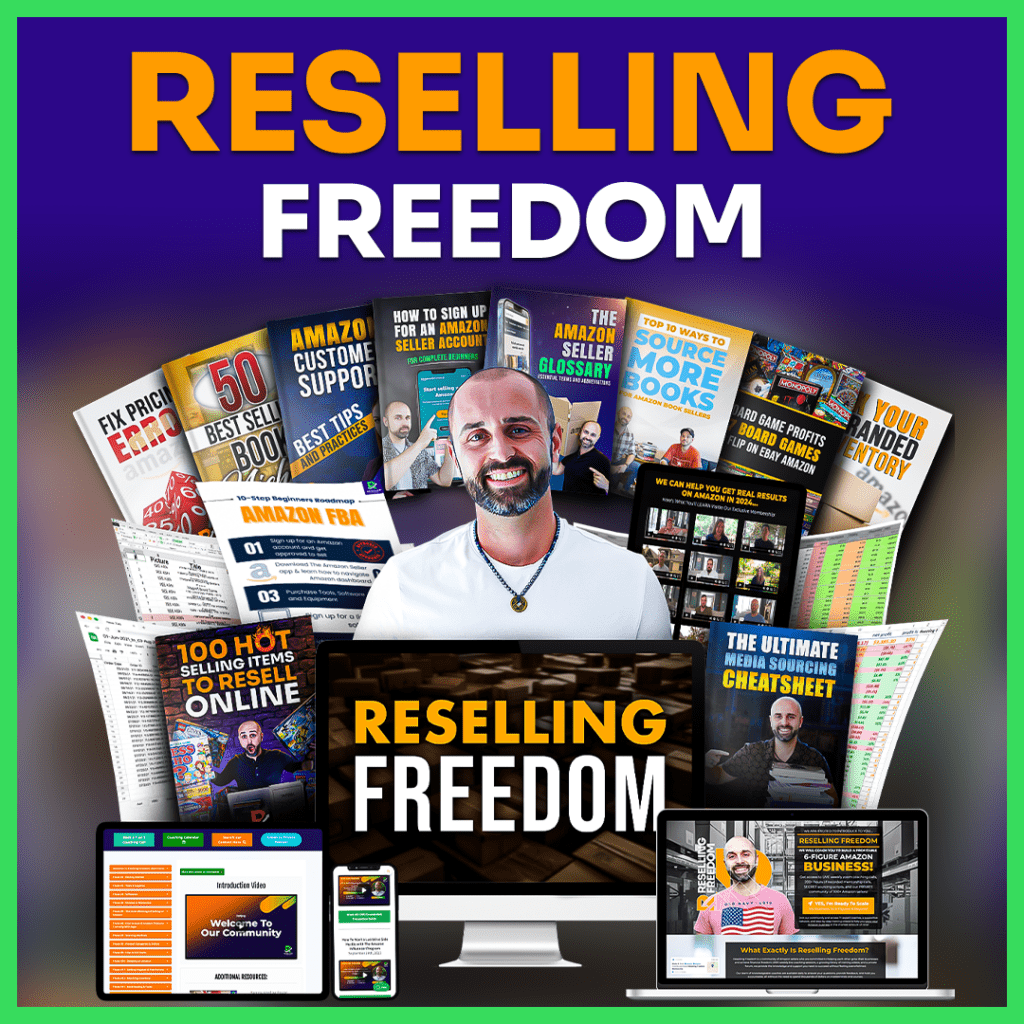
If you're new to Amazon and wondering how to start making money, I want to break down exactly what’s working for me and how I’ve scaled my business to over $700,000 in sales annually.
I’ve been selling on Amazon for over 10 years, and I’ve tried a lot of methods—from thrift stores to retail arbitrage—but here’s how I’m doing it today with eBay to Amazon flips.
That said, I want to give you a heads-up: methods like eBay to Amazon or any online arbitrage do carry more risk because you’re spending more money upfront.
As you scale your operation without invoices, especially in today’s market, you need to be cautious about avoiding counterfeits and steering clear of IP complaints.
Make sure you’re sourcing wisely and protecting your account.
This applies if you're buying from eBay, thrift stores, garage sales, and even 3rd party Amazon sellers.
1. BEFORE YOU START EBAY TO AMAZON: Sell What You Can Find

When you're just getting started, the best advice I can give you is to start small and start cheap.
Go to thrift stores, garage sales, or even sell things lying around your house.
This is crucial because it gives you hands-on experience with how to source, list, and sell items.
You'll make mistakes, and that’s okay.
What matters is learning the process without a huge financial risk.
Once you've gained a solid understanding of how to sell on Amazon and start making a consistent profit, that’s when you can explore advanced strategies like eBay to Amazon flips, just like I do.
You can also look into other online arbitrage methods, such as Amazon to Amazon flipping.
These techniques can help you scale your business even further and take it to the next level.
2. Transition to eBay Sourcing

Once you’ve got the hang of things and feel more comfortable, I highly recommend moving into eBay to Amazon flips.
I started doing this about 3 years ago, and it’s allowed me to scale fast.
I spend anywhere from $20K to $30K a month sourcing products on eBay, and I’ve sold everything from DVDs, books, electronics, tools, video games, toys, and even household items.
Pro tip: Focus on new items in categories like DVD's or used books. I stay away from selling books as “new” because publishers are cracking down on that. Stick to the rules to avoid issues down the line.
3. Use Software to Scale Faster

If you want to scale beyond manually sourcing products, here’s the game changer: software.
I used to use FlipMine (still a great tool), but now I mainly rely on my own software called Replen Catcher.
It helps me find the best deals on eBay that I can flip for a profit on Amazon.
https://replencatcher.com (free 14-day trial)
You don’t need software to start, but once you get serious, it’s a huge time saver.
Here’s what software does for me:
- I can set filters like product rank, profit margins, and seller ratings.
- It monitors over 600,000 products between eBay and Amazon, so I don’t have to.
- I can even upload my own list of products and have the software track those, so whenever something pops up on eBay that meets my criteria, I get notified right away.
- I can add target buy prices and purchase seasonal items other softwares miss
- I can monitor all my best leads & replens and purchase items with a single click
4. Build a Team of Virtual Assistants (VAs)

I didn’t build this business overnight, and I definitely don’t run it alone.
I have two full-time virtual assistants from the Philippines who do all my sourcing for me.
They work 40 hours a week, finding products and adding them to my system.
I also have part-time help with repricing and handling backend issues like stranded inventory and lost shipments.
If you’re just starting out, don’t worry about hiring right away, but once you start generating consistent sales, a VA can free up a ton of your time.
I hire all my virtual assistants using OnlineJobs.ph
5. Outsource the Prep Work with a Prep Center

When I first started, I did everything myself—cleaning, labeling, shipping.
But now I use a prep center to handle all of that. I buy my products on eBay and have them shipped directly to the prep center.
They do all the heavy lifting, like prepping, labeling, and shipping to Amazon for me.
Right now, I use Little Owl Prep in Ohio.
They handle everything for a small fee, which means products never touch my hands.
This allows me to run my Amazon business on autopilot while focusing on finding more great deals.
6. Manage Your Risk

Selling on Amazon comes with risks, especially if you’re flipping products from eBay.
Here are some tips I’ve learned:
- Avoid popular or high-risk products that are more likely to trigger IP complaints.
- Be cautious with DVDs and other media that may be prone to counterfeit issues. For example, I don’t sell DVDs with ranks lower than 10,000 because the risk of counterfeit is higher.
- Always check the product’s history using tools like Keepa to ensure it hasn’t had issues with sellers getting kicked off the listing.
- Use Booksrun to check counterfeit books before buying.
7. Diversify Beyond Amazon

Even though I’m making great money on Amazon, I’ve started diversifying by moving into Walmart as well.
The last thing I want is to have all my eggs in one basket.
If something happens with Amazon, you don’t want to be left scrambling. Start thinking about expanding once you’ve got Amazon figured out.
By following these steps, I’ve been able to grow my business while working just a few hours a week.
It took time, effort, and a lot of learning from mistakes, but now I’m on pace to hit over $200,000 in profit this year.
If you’re serious about making money on Amazon, start small, use the tools and tips I’ve shared, and scale from there.
And if you’re looking for even more guidance, don’t miss the chance to join Amanda’s Walmart Flipping Masterclass at https://wfmasterclass.com.
It’s a step-by-step program designed to help you start and grow your Walmart business like a pro.
Don’t miss out—take control of your eCommerce journey today!
The opportunity is huge!
Steve w/ “Raiken Profit” 🔥









